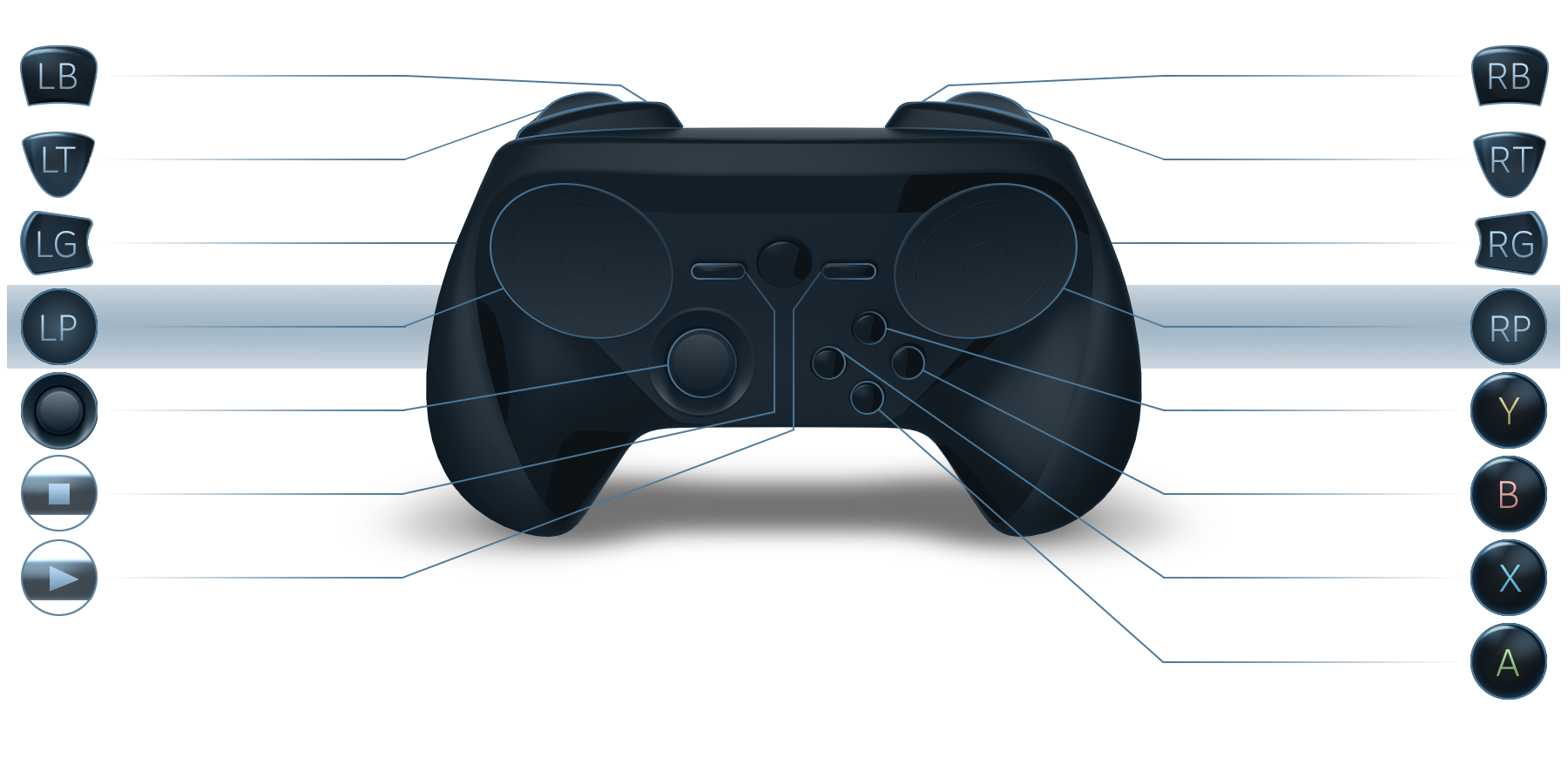New Steam Controller Design Surfaces
The last we heard about Valve Software’s Steam controller, the peripheral lost its touchscreen and gained a few buttons. At the time, reports stated that the screen was removed because Valve felt that it was just too distracting. However, there’s a good chance it was simply too expensive and would shoot the price higher than competing gamepads.
With the screen gone, Valve could then mount four buttons next to the left touchpad to serve as a D-pad, and four buttons planted near the right touchpad in the classical “ABXY” configuration. Both groups were supposedly added to deal with backwards compatibility issues.
Now Steam Database has discovered an image stored away on the hard drive that reveals a new configuration. To see it, Steam users must have installed the latest client beta update dated July 23, 2014. After that, head on over to the Steam\tenfoot\resource\images\library folder. There you’ll see a diagram of the controller with an analog thumbstick residing where the D-pad buttons were once installed.
Looking at the recent revisions taking place this year, Valve’s controller seems to have moved away from being a game changer to more of a mainstream gaming peripheral. Still, given that the controller isn’t expected to make a final retail appearance until sometime in 2015, there’s plenty of time to test the waters and spit-shine the design.
“We’re now using wireless prototype controllers to conduct live playtests, with everyone from industry professionals to die-hard gamers to casual gamers,” said Valve’s Eric Hope back in May. “It's generating a ton of useful feedback, and it means we'll be able to make the controller a lot better. Of course, it's also keeping us pretty busy making all those improvements. Realistically, we're now looking at a release window of 2015, not 2014.”
“Obviously we're just as eager as you are to get a Steam Machine in your hands, Hope added, "but our number one priority is making sure that when you do, you'll be getting the best gaming experience possible.”
Follow Kevin Parrish @exfileme. Follow us @tomshardware, on Facebook and on Google+.
Get Tom's Hardware's best news and in-depth reviews, straight to your inbox.

Kevin Parrish has over a decade of experience as a writer, editor, and product tester. His work focused on computer hardware, networking equipment, smartphones, tablets, gaming consoles, and other internet-connected devices. His work has appeared in Tom's Hardware, Tom's Guide, Maximum PC, Digital Trends, Android Authority, How-To Geek, Lifewire, and others.
-
dstarr3 I make $487,000 a day sitting at my desk masturbating! You, too, can be rich like me! Just go to ww.ghfdgfd.com and sign our lengthy and suspicious contract without reading it now!Reply -
permanoob ReplyI make $487,000 a day sitting at my desk masturbating! You, too, can be rich like me! Just go to ww.ghfdgfd.com and sign our lengthy and suspicious contract without reading it now!
Went to the site. Masturbating now. A+++ would click again. -
whiteodian LoL. Thanks I needed the laugh. Removing the screen seems like a very practical change. It should help cut costs and improve battery life/weight. I can't wait to try it out.Reply -
Mitchell Marvin HA I already make 6 figures sitting at a desk masturbating all day. You can too! Just find employment with the Federal Government like me! Then you too can ride the clock all day and never actually do TOO much work, all the while receiving promotions and bonuses for meeting expectations.Reply -
eklipz330 seems like theyre trying to make it as accessible OMG YOU GUYS GET PAID TO MASTURBATE?Reply -
mmohon Step 1: Have Controller connect to my gaming rig via WiFi (see Nvidia gamepad)Reply
Step 2: Have steam stream game to my chromecast
Step 3: Profit -
blue17echo Like the PSP, the analog stick is on the wrong side. I'm still super concerned about using the touchpads for shooters. Maybe the concave surface will help, but the lack of tactile feedback is what kills touchscreen controls for me. Of course, i could be totally wrong.Reply -
tobalaz Man, they just can't finalize a design can they?Reply
Its changing from something different and possibly revolutionary to just like everything else with every revision.... -
back_by_demand Seems like the Steam controller's buzzword list just went from "revolutionary" to "samey" and "compromise".Reply
